Location of Moxi Town
Moxi Town (磨西镇) is a gateway community for Hailuogou Glacier Park. Now the town has become a logistic base that caters for travelers experiencing Hailuogou Glacier’s pristine forests, hot springs, rugged mountains, and spectacular glacier ice.
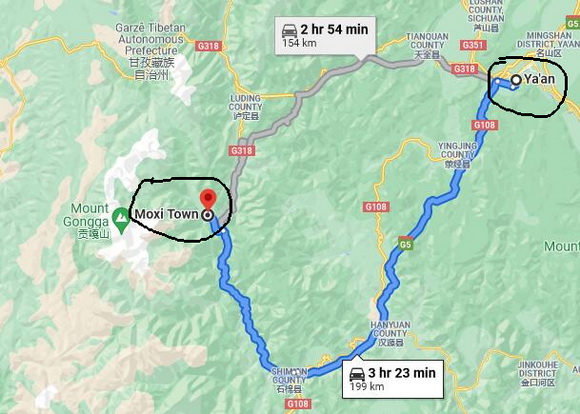
It is located 64km to the south of Luding County (泸定) and 133km to the southeast of Kangding (康定), the seat of Ganzi Tibetan Autonomous Prefecture in the West Sichuan.
Layout of Moxi Old Town
Moxi Town is also a booming town with some newly built hotels, inns, restaurants and shops largely lined up along the only wide and modern street that runs about 400 meters from the higher north to the lower south.
Built on a tilting platform surrounded by the mountains on its east, north and west, Moxi is still a two-horse town despite of years’s fast development.
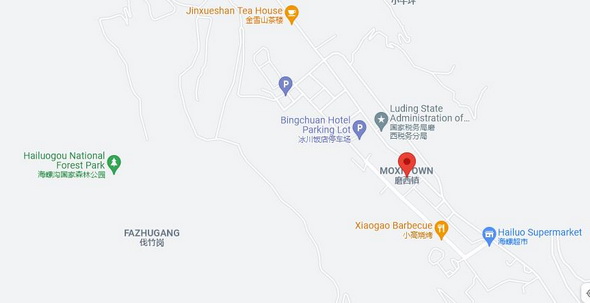
At its south entrance, Moxi has two roads: one leading to Mount Gongga on its west and the other to Kangding on its east. The main street runs from the higher north to the lower south, 10 meters wide and clean, lined with 2-3 storey houses and several massive Tibetan sytle buidlings. Not so many people on the street, partly due to the shoulder season and partly the dinner time.
Periodic Tibetan-style buidings remind you that this high altitude town is mainly inhabited by Han, Tibetan, Yi, and Qiang ethnic minorities with a long history. “Moxi” literally means “A Promising Land ” in ancient Qiang Language.
Horse Road ,or chamadao (茶马古道川藏道)
Nowadays the Moxi Old Town is a buzzword mainly due to the establishment of Hailuogou Glacier Park that opened to the public in 1987. But Moxi Ancient Town’s fame dates well back to the ancient Sichuan Tibet Tea and Horse Road ,or chamadao (茶马古道川藏道) that started in Ming Dynasty (1368-1644 ). Moxi was an important old town along the world famous network of the Tea and Horse Route. Kangding (康定) was the main site for Tea Horse Trading in Kham, which connected the hinterland of China and Tibet together.
Tea produced in Sichuan, or much in Ya’an in particular, was carried by mule or horse caravans, or very often even by men for the horse trading business with Tibetans. Tea does not grow in high altitude areas, but in relatively lower altitude areas, such as Sichuan and Yunnan. Tea was introduced to Tibet during the Tang Dynasty (618A.D.-907A.D.) and Tibetans have enjoyed “tea” as an indispensable part of their life, breaking down fats and helping digestion.
The Tea and Horse Route has become a cultural relics. The over ten-day strenuous hike along the ancient Tea and Horse Road from Moxi to Kangding in the past has been shortened to a few hours by the highway between Moxi and Kangding via Luding. In addition, the local Moxi people take pride in two more things – 1) the old Catholic Church 2 ) Chairmam Mao’s former residence, which both are located in the Moxi Old Town.
Night Tour of Moxi Ancient Town
Back from Camp No.04, we check into the hotel by the right side of Hailuogou Service Center with a good bargain thanks to the non-peak tourist season.
After a short break and before dinner, I persuade Mr. Chen to have a stroll along the old part of Moxi Town, having a glimpse of the legendary church and Mao’s former residence as well as practicing some digital night shooting skills with his help and you know, Mr. Chen is a photography enthusiast.
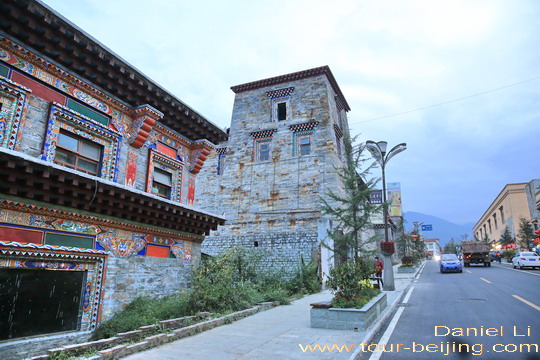
Walking off the main street, we enter the east-west side street. Very soon we see the old stone flagged street! The original construction of this old street area dates back to the end of China’s last Qing Dynasty ( 1644 -1911) and the early Nationalist Era in China ( 1927-1949 in Mainland China ). Walking on the slab-paved street flanked by the old wooden two-storey buildings brings you back to the old days.
The old part of Moxi Town is only left with one old and narrow street, which reminds me of the red-lantern streets in Lijiang Old Town (丽江古城). I don’t think any local residents still live on the old street. Doing business by operating the street-front stores is a good way to keep and preserve the old street. Like other old streets elsewhere, the old Moxi street is a good place for a night out for visitors, drinking, eating and shopping, relaxing after a day of sightseeing.
Putting up the tripod to support my camera for the night shooting with the guidance of Mr. Chen. Brightly lit red-lanterns hanging high above the two-storey wooden building.
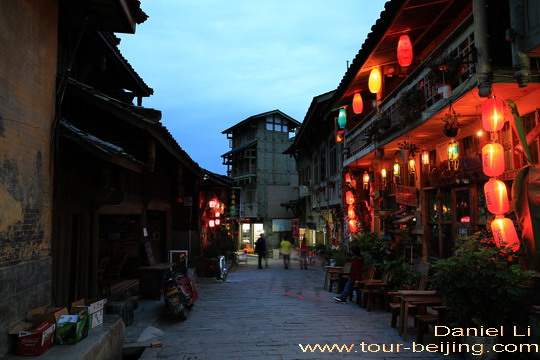
The old street flanked by 2-3 storey wooden buildings selling local products.
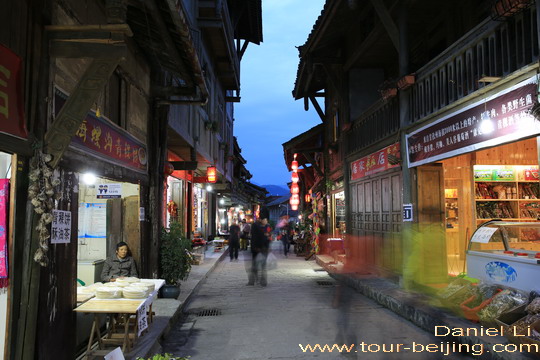
The riskety street-front store sells yak meat.
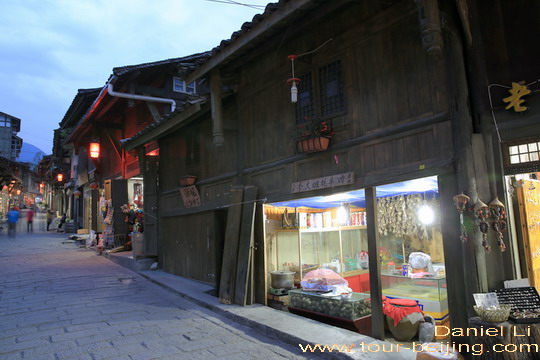
A silver store sells many kinds of hand-crafted silver ornaments.
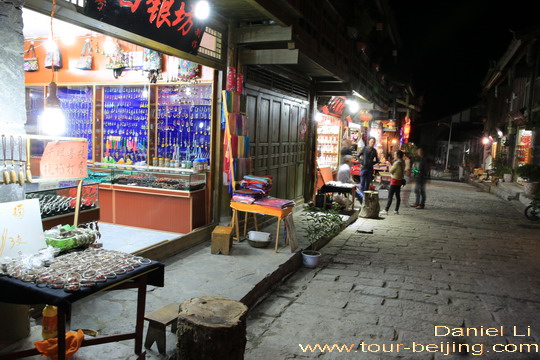
A zoom-in picture of the exterior of a bar known as ” Tribe”.
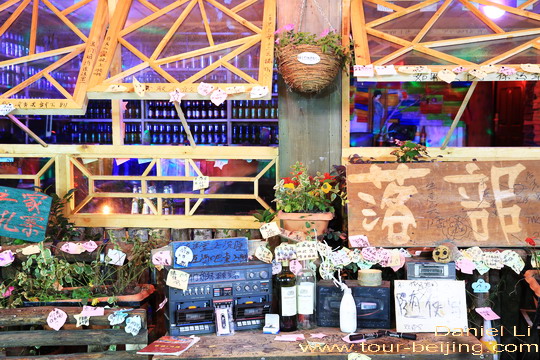
This bar is called ” Little Dimple”.
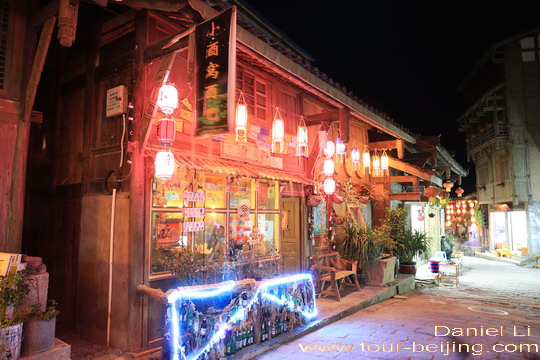
Very soon we find ourselves at the end of the old street where we see the Catholic Church! The church was originally built in 1918 with a blend of Chinese and European styles.
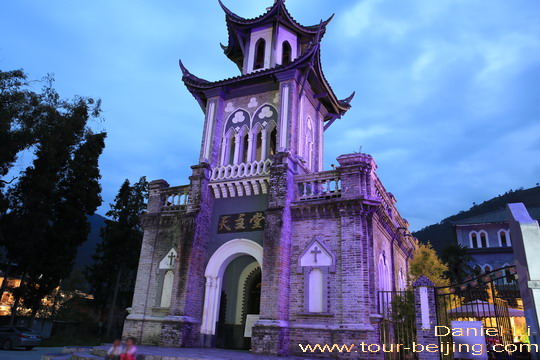
Maybe it is too late and we are not allowed to enter the compound attached to the church where Chairman Mao once stayed overnight in May, 1935 before he led his red army seizing Dadu River. He and Zhude held the important Moxi Meeting in the catholic church. The meeting set up the strategic target for the next step on the Long March. (October 1934 – October 1935), a military retreat undertaken by the Red Army of the Communist Party of China before taking over the whole China.
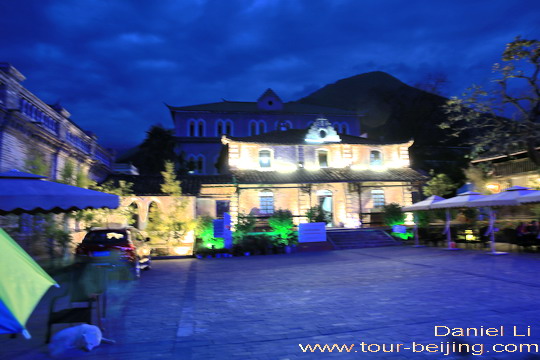
Add-On
Drive from Hanzhong to Ya’an
Ya’an Night View
Most Beautiful Sky Road in China
Moxi Old Town ( Tips, Photos & Map)
Camp No.03 at Hailuogou Glacier
Camp No.04 at Hailuogou Glacier
Night View of Kangding
Drive from Kangding to Xinduqiao
Drive from Xinduqiao to Danba
Jiarong Tibetan Blockhouses
Jiarong Tibetan Ancient Watchtowers
Drive from Xinduqiao to Yajiang
Drive from Yajiang to Litang
Drive from Litang to Daocheng
Drive from Litang to Batang
Drive from Batang to Mangkang
Drive from Shangri-la to Daocheng
Drive from Daocheng to Yading
Yading Brings You Inner Peace
Hassle-free Chengdu & Sichuan Guided Tours
If you don’t want to go the do-it-yourself route and prefer the hassle-free escorted tours, here are some options for Chengdu and Sichuan guided tours:
Chengdu tour
Chengdu Car Rental with Driver
Create My Chengdu Trip
Jiuzhaigou Tour
Sichuan Tour
Further Readings
Top 10 Attractions in Chengdu
Best Time to Visit Chengdu
Chengdu Airport
Railway stations in Chengdu
Chengdu Taxi
Chengdu Research Base of Giant Panda Breeding (Tips, Photos & Map)
How to visit Wuhou Shrine
How to visit Du Fu Thatched Cottage
How to visit Jinsha Site Museum
How to visit the tomb of Wang Jian in Chengdu
How to Visit Wangjiang Pavilion Park in Chengdu
How to visit Qingyang Palace in Chengdu (Tips, Photos & Map)
How to Visit Jinli Street
How to visit Kuan Alley and Zhai Alley
Qintai Road, Qintai Gujing Chengdu (Tips, Photos & Map)
Shaoling Road Bar Street Chengdu (Tips, Photos & Map)
Jiuyanqiao Bar Street in Chengdu (Tips, Photos & Map)
The Old Teahouse in Pengzhen Town, Chengdu
Bipenggou is a fairyland in Autumn
When is the best time to visit Jiuzhaigou?
Best Places to Visit Autumn Leaves in Sichuan
Top 10 Places to Visit in Sichuan
Ruoergai Grassland, my first trip to Ruoergai Grassland
Any questions, just drop a line.





